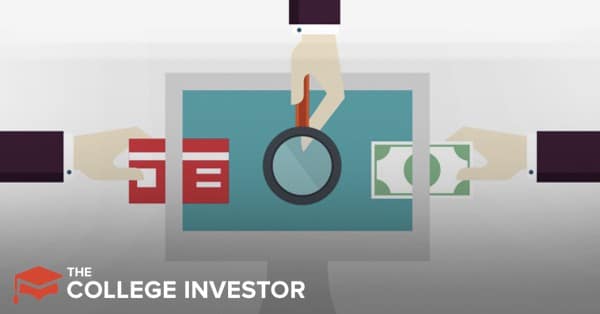Best Options Trading Platforms In 2025


Choosing the right platform for trading options isn’t just about finding the lowest contract fee – it’s about tools, approval levels, support, and ease of use. With options trading, small differences in pricing or functionality can mean big differences in cost or performance. At The College Investor, we evaluated the major U.S. broker-dealers based on real-world trading considerations, making sure you can compare not only fees but the full trading experience before deciding.
Whether you’re just starting with single‐leg calls and puts, or you’re building multi-leg spreads and advanced strategies, the platforms below represent the strongest options going into 2026 – matched to different types of traders. Use the table for a quick view, then read the deeper section on how to pick the right one for you.
If you want to buy stocks for free, check out this list: Best Places To Trade Stocks For Free >>
|
Commission (per contract) |
||
|---|---|---|
|
thinkorswim (Charles Schwab) |
Trader wanting robust tools |
|
|
Interactive Brokers (IBKR) |
Starting at $0.70 ($1 min) |
Very active traders or international traders |
|
Advanced traders wanting customization |
||
|
Value-oriented or Ally eco-system |
||
|
E*TRADE by Morgan Stanley |
Traders wanting more than just options tools |
|
|
Beginners wanting a simple mobile interface |
Charles Schwab is a classic company that is continuing to try and reinvest itself for the next generation of investors. With that said, it’s created a lucrative options pricing structure and is building out better tools for options traders. Plus, with its acquisition of TD Ameritrade, it was able to acquire the best options trading platform: Thinkorswim.
With the acquistion of Thinkorswim, Charles Schwab has the best options trading platform available for investors today. The amount of tools available to find trades, chart spreads, and more makes it so robust, yet easy to use. Check out this full guide on How To Setup Thinkorswim.
Read our full Charles Schwab review here.
Interactive Brokers (IB) has robust desktop and mobile apps. You can also trade through their website.
Their pricing structure is one of the most complex, and it’s designed for active traders. While not as geared towards options like thinkorswim, options traders will still feel at home on their platform.
Read our full Interactive Brokers review here.
|
Starting at $0.70 per contract (with $1.00 min) |
|
|
Down to $0.15 per contract with at least 100,001 trades per month |
|
|
24/7 by phone and chat, branches |
|
TradeStation is one of the most customizable platforms on this list, and is really geared towards options traders (and other traders in general). TradeStation has dedicated desktop and mobile apps.
TradeStation also has some of the best entry level pricing for options traders.
The big drawback here is that their platform can be a bit complicated for the inexperienced. However, if you’re trading options, you need to be a strong investor.
Read our full TradeStation review here.
Commissions: $0.00 + $0.50 per contract.
Customer service: Available Monday through Friday, 9 a.m. to 5 p.m. ET by phone and chat.
Ally Invest has really been working on attracting new investors over the last couple of years, and options traders are no exception. Ally Invest doesn’t offer a dedicated mobile app. Their website is based on HTML5 and can be accessed from any device.
Their pricing structure is very competitive, and their volume discount makes it top-notch. The great thing about their discounted pricing is that it also applies if you maintain a $100,000 daily balance, which can be do-able for many investors.
Read our full Ally Invest review here.
E*TRADE is a popular trading platform that has transitioned itself into being strong in options trading. E*TRADE has a dedicated mobile app. It’s not the cheapest, but it’s one of the most robust options on this list.
They also have a full brokerage platform that allow you to invest in a wide variety of investment products. Read our full E*TRADE review here.
|
30 trades per quarter lower it to $0 + $0.50 per contract |
|
Public recently launched options trading on their mobile app, and it has a great interface for doing basic options trading. Currently, they are only allowing you to trading long calls and long puts, but in the near future you’ll be able to trade covered calls and puts, as well as setup straddles and strangles. Other types of spreads are also coming soon.
They also have a full brokerage platform that allow you to invest in a wide variety of investment products. Read our full Public app review here.
|
50% rebate of trading revenue |
|
Before opening an account, check each of these categories:
Options trading can provide flexibility and leverage, but it’s not suitable for everyone. Unlike stock investing, options have expiration dates, time decay, and complex strategies that can amplify losses.
Before you begin, understand the following key risks:
Always review the Characteristics and Risks of Standardized Options (ODD) (PDF File) document from the Options Clearing Corporation before trading. Beginners should start with simple call or put purchases before moving to spreads or multi-leg strategies.
Our goal is to help you choose a brokerage that fits your experience level, budget, and trading goals. To build this list, The College Investor reviewed dozens of brokerage firms and trading platforms that support options trading for U.S. investors.
We focused on four primary categories:
Each platform was tested using publicly available data, verified pricing disclosures, and actual platform experiences. No brokerage paid for inclusion, though we may receive compensation if you open an account through a link on our site (see our policy).
1. What’s the cheapest platform for trading options?
Many platforms charge between $0.50 and $0.65 per contract, though a few now offer zero-commission options. The right choice depends on whether you value price or advanced tools.
2. Do I need special approval to trade options?
Yes. Brokers use a tiered system of approval levels. Level 1 typically covers covered calls, while higher levels (2–4) allow for spreads and naked options.
3. Are options trades free if a broker advertises “zero-commission”?
Usually not completely free. While the broker may waive the base commission, the per-contract fee still applies.
4. Can I trade options in an IRA?
Yes, but only limited strategies are allowed – typically covered calls or cash-secured puts. Margin trading is generally prohibited in IRAs.
5. What’s a good platform for beginners?
Platforms that offer paper trading, visual strategy builders, and educational videos (such as Ally Invest or E*TRADE) are great starting points.
6. What are multi-leg strategies?
These are trades combining multiple options, such as spreads, straddles, or iron condors, to manage risk or speculate on volatility.
7. Do I need margin to trade options?
Not always. Basic call or put buying doesn’t require margin, but selling or shorting options does.
8. Can I lose more than I invest in options?
Yes—if you sell options without protection, your losses can exceed your initial capital. Always know your strategy’s risk exposure.
9. How are options taxed?
Most options trades are taxed as short-term capital gains or losses, since you typically hold them for less than a year.
10. Where can I learn to trade options safely?
Start with your broker’s education center, read the ODD booklet, and consider paper trading until you’re confident with pricing and expiration management.

Industrial flex space has become a quiet favorite among sophisticated investors seeking durable income backed by real business demand. If...

Getting an inheritance is the epitome of a mixed blessing. You receive a financial windfall, but the cause is the...

During his tenure as the California Secretary of Health and Human Services, Mike Wilkening cemented his reputation as a steady...